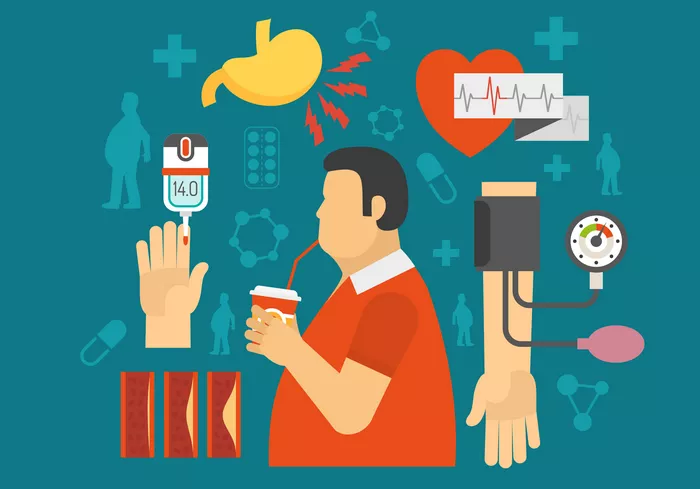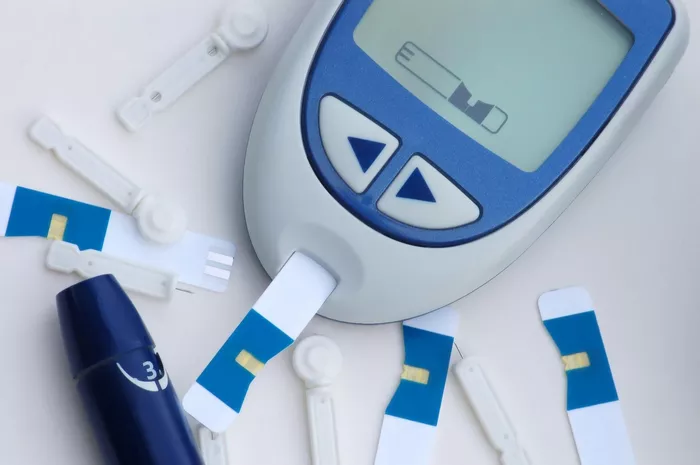Type 2 diabetes mellitus (T2DM) poses a significant public health challenge in the United Kingdom, with prevalence rates on the rise and substantial impacts on individual health, healthcare systems, and societal well-being. While T2DM is a multifactorial condition influenced by genetic, environmental, and lifestyle factors, understanding the underlying causes is paramount in developing effective prevention strategies, early detection methods, and targeted interventions to mitigate the burden of this chronic disease. This article endeavors to provide a comprehensive exploration of the causes of T2DM in the United Kingdom, shedding light on the complex interplay of genetic susceptibility, environmental exposures, socioeconomic determinants, and lifestyle behaviors contributing to its onset and progression.
1. Genetic Predisposition and Family History
Genetic predisposition plays a significant role in the development of T2DM, with family history serving as a potent risk factor for the disease. Numerous genetic variants and polymorphisms have been implicated in T2DM susceptibility, affecting various aspects of insulin secretion, insulin action, beta-cell function, and glucose metabolism. Genome-wide association studies (GWAS) have identified multiple genetic loci associated with T2DM risk, including genes involved in pancreatic beta-cell function (e.g., TCF7L2, KCNJ11), insulin signaling pathways (e.g., IRS1, PIK3R1), and glucose homeostasis (e.g., GCK, SLC30A8).
While genetic factors contribute to individual susceptibility to T2DM, they interact with environmental and lifestyle factors to modulate disease risk. Individuals with a family history of T2DM are at higher risk of developing the condition themselves, highlighting the importance of genetic screening, early detection, and targeted interventions for high-risk populations in the United Kingdom.
2. Obesity and Adipose Tissue Dysfunction
Obesity represents one of the most significant modifiable risk factors for T2DM, exerting profound effects on insulin sensitivity, glucose metabolism, and systemic inflammation. The prevalence of obesity has reached epidemic proportions in the United Kingdom, with approximately two-thirds of adults and one-third of children classified as overweight or obese. Excess adiposity, particularly visceral adipose tissue accumulation, disrupts adipose tissue function and promotes the release of pro-inflammatory cytokines, adipokines, and free fatty acids, contributing to insulin resistance and impaired glucose homeostasis.
Adipose tissue dysfunction, characterized by adipocyte hypertrophy, adipose tissue inflammation, and altered adipokine secretion, plays a central role in the pathogenesis of T2DM. Adipokines such as adiponectin, leptin, and resistin modulate insulin sensitivity, appetite regulation, energy balance, and systemic inflammation, influencing the development and progression of insulin resistance and T2DM. Obesity-related insulin resistance, coupled with impaired beta-cell function and compensatory hyperinsulinemia, ultimately leads to the onset of T2DM in susceptible individuals.
3. Sedentary Lifestyle and Physical Inactivity
Sedentary behavior and physical inactivity represent key contributors to the rising prevalence of T2DM in the United Kingdom, exacerbating obesity, insulin resistance, and metabolic dysfunction. Modern lifestyles characterized by increased screen time, prolonged sitting, desk-bound occupations, and reliance on motorized transportation have led to decreased energy expenditure, reduced muscle mass, and impaired glucose utilization, predisposing individuals to insulin resistance and T2DM.
Regular physical activity plays a crucial role in preventing and managing T2DM by improving insulin sensitivity, enhancing glucose uptake by skeletal muscle, and promoting weight management. The UK Chief Medical Officers’ Physical Activity Guidelines recommend adults engage in at least 150 minutes of moderate-intensity aerobic activity or 75 minutes of vigorous-intensity aerobic activity per week, along with muscle-strengthening activities on two or more days a week. Encouraging individuals to adopt a more active lifestyle, incorporate regular exercise into their daily routine, and reduce sedentary behavior is essential in combating the T2DM epidemic in the United Kingdom.
4. Unhealthy Dietary Patterns and Nutritional Factors
Dietary habits and nutritional factors play a pivotal role in the development and progression of T2DM, with dietary patterns characterized by excessive calorie intake, high glycemic load, refined carbohydrates, saturated fats, and processed foods contributing to insulin resistance, obesity, and metabolic dysfunction. The Western diet, rich in processed foods, sugary beverages, red meat, and trans fats, has been linked to an increased risk of T2DM and cardiovascular disease in the United Kingdom.
Conversely, adherence to a healthy dietary pattern, such as the Mediterranean diet or Dietary Approaches to Stop Hypertension (DASH) diet, rich in fruits, vegetables, whole grains, lean protein, and healthy fats, is associated with a lower risk of T2DM and improved metabolic health. Dietary modifications, portion control, carbohydrate counting, glycemic index/load awareness, and nutrition education are essential components of T2DM prevention and management strategies in the United Kingdom.
5. Socioeconomic Disparities and Environmental Factors
Socioeconomic status (SES) and environmental factors play critical roles in shaping the distribution and determinants of T2DM in the United Kingdom, with disparities in income, education, employment, housing, and access to healthcare contributing to differential disease risk and outcomes across populations. Individuals from socioeconomically deprived areas are disproportionately affected by T2DM, facing barriers to healthy food access, safe recreational spaces, affordable healthcare services, and diabetes education programs.
Environmental factors, including urbanization, food environment, built environment, air pollution, and neighborhood characteristics, influence lifestyle behaviors, dietary choices, physical activity levels, and metabolic health outcomes, contributing to geographical variations in T2DM prevalence and incidence rates across regions in the United Kingdom. Addressing socioeconomic disparities, promoting health equity, and implementing policies to create supportive environments for healthy living are essential strategies in combating the T2DM epidemic and reducing health inequalities in the United Kingdom.
Conclusion: Towards a Multifaceted Approach to T2DM Prevention and Management
In conclusion, type 2 diabetes mellitus is a complex and multifactorial disease influenced by a myriad of genetic, environmental, socioeconomic, and lifestyle factors in the United Kingdom. While genetic predisposition confers individual susceptibility to T2DM, environmental exposures, such as obesity, physical inactivity, unhealthy dietary patterns, and socioeconomic disparities, interact with genetic factors to modulate disease risk and progression. Addressing the underlying causes of T2DM requires a multifaceted approach that encompasses public health interventions, policy initiatives, community-based programs, and individual behavior change strategies aimed at promoting healthy lifestyles, preventing obesity, improving access to nutritious foods, fostering active environments, and reducing health inequities. By adopting a comprehensive and collaborative approach to T2DM prevention and management, the United Kingdom can mitigate the burden of this chronic disease, enhance population health, and promote well-being for all individuals across the nation.



























